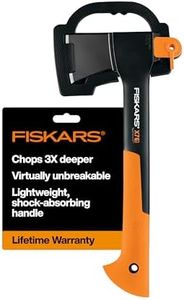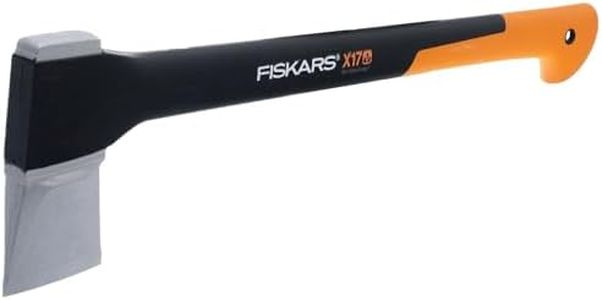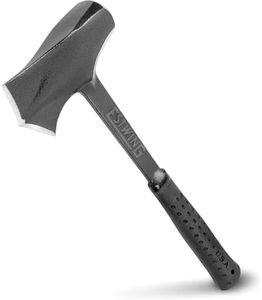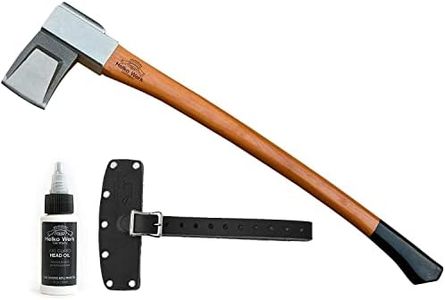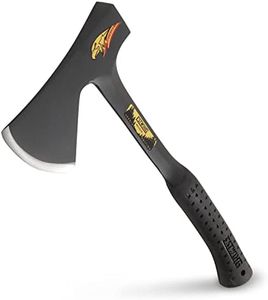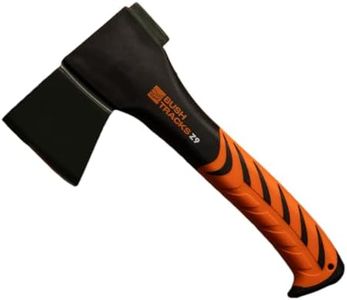We Use CookiesWe use cookies to enhance the security, performance,
functionality and for analytical and promotional activities. By continuing to browse this site you
are agreeing to our privacy policy
10 Best Wood Splitting Axes
From leading brands and best sellers available on the web.By clicking on a link to a third party's website, log data is shared with that third party.
Buying Guide for the Best Wood Splitting Axes
Choosing the right wood-splitting axe can make all the difference in how easily and safely you get your firewood ready. It's important to know that not all axes are the same; certain features will suit different users and needs. When picking a wood-splitting axe, consider what kind of wood you'll be splitting (hardwood or softwood), how often you'll use it, and your own strength and experience level. Understanding the key specs will help you narrow down the best option for your particular situation.Axe Head WeightThe head weight of a wood-splitting axe refers to how heavy the metal part is that does the splitting. This weight is important because it affects the force you apply to the wood and how easy the axe is to control. Lighter axe heads (around 2 to 3 pounds) are easier for beginners or people who don't have a lot of arm strength and are splitting small logs. Heavier heads (4 pounds or more) give more power and can split larger, tougher logs, but they require more strength and stamina to use safely and accurately. Choose a weight that feels comfortable to swing repeatedly based on your size and the size of the logs you intend to split.
Handle LengthHandle length is measured from the end of the handle to the top of the axe head. It influences both your control over the axe and the swinging power you can generate. Short handles (about 14-20 inches) provide more control and are suited for one-handed use or for splitting kindling. Medium handles (20-28 inches) offer a balance between control and power, making them good for general splitting. Long handles (28-36 inches) let you exert more force, which helps with larger logs, but require precise control to avoid missing your target. Pick a handle length that matches your height and the size of the wood you'll be splitting, and ensure you can swing the axe safely.
Axe Head ShapeThe shape of the axe head impacts how efficiently it splits wood. Splitting axes usually have a wedge-shaped head, which forces the wood apart as it enters, compared to a thinner head designed for chopping. Wider, more pronounced wedge shapes make splitting easier for larger or knottier wood, while a slightly narrower wedge can be quicker for softer or smaller logs. Think about the types of wood you'll be working with and choose a head shape that matches—wider wedges for big, tough logs, and slimmer wedges for lighter tasks.
Handle MaterialHandles are usually made of wood, fiberglass, or steel. Wooden handles (often hickory or ash) are traditional, provide a natural grip and shock absorption, and can be replaced if broken. Fiberglass handles are durable, less likely to splinter, and resist weather damage, but are not as easily replaced. Steel handles are very strong but can be heavy and may transmit more shock to your hands. The best choice depends on your preference for comfort, maintenance, and the kind of work you’re planning—wooden handles for classic feel and easy repair, fiberglass for durability and less care, and steel for heavy-duty work.
Balance and GripProper balance between the axe head and handle makes swinging safer and more efficient. A well-balanced axe feels comfortable and controlled when you pick it up and swing it, not too top-heavy or awkward. The grip refers to how securely you can hold the axe, often helped by a shaped or textured handle to prevent slipping. Test out the axe if possible to see if it feels steady and comfortable in your hands, and choose one with a grip that suits your hand size, especially if you plan on long splitting sessions.
